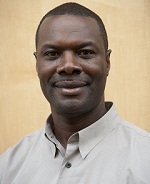Interview with Brian Tsuchiya, Jennifer Carlson, and Vince Maye, ReSound
 CAROLYN SMAKA: Today I’m speaking with Brian Tsuchiya, Vice President of Operations; Vince Maye, Director, Custom Operations; and Jennifer Carlson, Commercial Product Manager at ReSound about, a new invisible-in-the-canal (IIC) device that is now available as part of ReSound’s new product line - Verso. Brian, how did this new device come about – what sorts of market needs did ReSound see that indicated a need for an IIC?
CAROLYN SMAKA: Today I’m speaking with Brian Tsuchiya, Vice President of Operations; Vince Maye, Director, Custom Operations; and Jennifer Carlson, Commercial Product Manager at ReSound about, a new invisible-in-the-canal (IIC) device that is now available as part of ReSound’s new product line - Verso. Brian, how did this new device come about – what sorts of market needs did ReSound see that indicated a need for an IIC?

BRIAN TSUCHIYA: We made the decision to pursue this part of the market and enter the IIC category after a lot of research and time spent with our customers. ReSound regularly works closely with customers, we interview them, send them surveys and work to continuously get an understanding of their likes and dislikes and their unmet needs. When it came to innovating in the custom instrument area and developing an IIC, we wanted to be certain we understood what customers need from an IIC device. We did a lot of homework before we started down this path.
BRIAN: We define an IIC based on our customers’ definition – that is, an IIC is a custom hearing instrument where the faceplate resides between the aperture and the first bend in the ear canal. Ideally it should fit very close to the first bend - our design objective was to ensure it fits within the aperture, between the aperture and the first bend for the greater majority of patients our customers may find to be interested.
CAROLYN: Jen, tell me about Verso - ReSound’s new technology– what features does the Verso product line offer?

JENNIFER CARLSON: Verso extends our industry-leading sound quality – the feedback suppression and noise reduction are second to none. The sound processing is meant to deliver the best hearing, everywhere and in virtually any environment. When it comes to the IIC model, due to size some features like directional microphones or controls on the instrument are not available. So it’s of the utmost importance that the underlying technology can classify the environment and can automatically adapt and provide the best settings for the user. Verso has a state-of-the-art environmental classification system to understand what environment that patient is in. The Environmental Optimizer adjusts the gain and the noise reduction according to that environment. Verso is outstanding in background noise.

VINCE MAY: With an extremely small device like an IIC, we wanted to ensure the very best possible performance in the feedback system at all levels, so DFS Ultra™ II with Music Mode™ is available at all price points.
VINCE: In the field study we conducted prior to launch, we took a sample of 250 subjects and found that 96% were candidates for Verso. We are very pleased with this rate.
CAROLYN: How did you accomplish such a high fit rate?
JEN: One of our goals in introducing the IIC was to offer a product that could fit more patients than comparable products on the market. What we heard was that these really could only fit a small number of patients who were interested in them. We also believed that ease of impression taking was important to both the patient and the dispenser. Those factors were critical in how we looked at the success of this product.
 VINCE: Exactly. We focused on a few key design factors to drive greater candidacy yield. We designed a new faceplate that utilizes a battery pill rather than a flex strip, since the flex contacts will add bulk to a faceplate. We’ve also been able to eliminate a few components within the instrument that also reduces the overall dimension. In addition, we reduced the shell thickness, which gave us more real estate on the interior, and enabled us to further recess the device.
VINCE: Exactly. We focused on a few key design factors to drive greater candidacy yield. We designed a new faceplate that utilizes a battery pill rather than a flex strip, since the flex contacts will add bulk to a faceplate. We’ve also been able to eliminate a few components within the instrument that also reduces the overall dimension. In addition, we reduced the shell thickness, which gave us more real estate on the interior, and enabled us to further recess the device.
We spent a lot of time with our R&D engineering group as we developed the manufacturing process to make sure that the Verso IIC is robust and has as much mechanical integrity as any other custom hearing instrument from ReSound.
CAROLYN: Jen mentioned ease of impression taking as an important factor in success. Are there any special tools or impression taking techniques required to fit the Verso IIC?
VINCE: In developing the IIC, it was important to us that the process of impression taking fit into the professionals’ current workflow and did not require any special processes, techniques or impression materials. We also have learned that dispensers and their patients don’t really enjoy taking deep impressions. We wanted to avoid this if we could.
Back in 2006 we did a field study to help us understand what comprised a really good impression, or what we call the ReSound TRUFIT™ impression. We define it by the following the 16/4 rule: an impression with a canal length of 16 millimeters, or about 4 mm past the second bend. Following this guideline usually provides adequate ear geometry and sufficient information so that we can determine the canal direction also provide best physical fit and acoustic performance. Based on this data, we have an ear light tool available with a 16 millimeter mark on the tip. It serves as a depth gauge for the placement of the otoblock. Once the otoblock is placed using this depth gauge, the clinician can be confident that the resulting impression will be sufficient to build a good-fitting custom product, including Verso IIC. So now no special technique is required to take an impression for an IIC. It just has to be a high integrity impression. Additionally, since most patients could be candidates for Verso, there isn’t really a need for a special tool. However, we have one available if a professional would prefer to have one on hand.
BRIAN: As Jen said, having an IIC that has a wide opportunity for candidacy and requires no special or deep impression is critical to our customers.
And our fit rate is high enough to eliminate the need for any special tool. As Vince mentioned, since the majority of our customers are already used to our 16/4 rule for impressions as a recommendation for other custom products. Early feedback indicates this approach has relieved a lot of anxiety that our customers had about offering IIC products.
CAROLYN: Let’s talk more about candidacy. You mentioned that your data show it can physically fit 96% of patients, but tell me more about who are candidates from an audiological and lifestyle perspective.
JENNIFER: Verso IIC is great for first-time users or experienced custom hearing instrument users with mild to moderately-severe hearing loss, up to about 75 dB. One of the things that we noted during the field trial was that the acceptance rate was pretty equal among people who were first-time users as well as current custom hearing instrument users. We really didn’t see any greater or less acceptance for one category or the other. In terms of lifestyle, Verso is in the top and plus segment, so it provides the very best technology available.
CAROLYN: Is occlusion an issue?
VINCE: In manufacturing Verso IIC, our objective is to provide the largest available vent based on the audiometric data and ear geometry. We try to fit a pressure vent, which is roughly about a millimeter in diameter, or to increase that if indicated per the audiogram, and if ear geometry will allow.
CAROLYN: The other things that come to mind when I think of deep fitting devices are slippage and comfort.
VINCE: As for comfort, we design Verso with 3D technology that utilizes software to stimulate the ear geometry and how the device will fit. It also allows us to observe the retention features so we can determine ease of insertion and removal, comfort and ensure the device stays in place. These are important issues in any fitting, and some of the reasons why it’s key to get a proper impression.
CAROLYN: What were some of the things you learned during the field trials?
BRIAN: The two most important things we learned and validated through the field trials were items that we mentioned - first, that there’s no special impression that’s required as long as they use the 16/4 rule to take the impression, and second that the product actually will fit around 96% of patients so no special candidacy or measuring tool is required.
JEN: In addition, there were some things we implemented in the product as a direct result of the field trials. For example, we standardized red and blue shells in order to easily discern between left and right, since the devices are so small and they tend to have a similar shape based on the ear geometry. We’re also putting a mark on the top of the shell to help the wearer insert it correctly. We’ve also standardized a charcoal colored faceplate. Because of the depth of insertion, we discovered that the dark faceplate blends in much better and makes it very difficult to see in the ear. All of this makes it easy for the patient to use – and that’s important to us.
VINCE: Lastly, through a lot of work with our field trial accounts, we made some changes to the removal line. Interestingly, as devices get smaller, the removal line itself becomes more prominent. So, we worked the professionals who participated in the field trial to determine the best location, design and contour of the removal line so that it virtually disappears when worn, and the average person won’t be able to see it in the ear. We designed the removal line to tuck behind the anti-tragus, which serves a couple of purposes. First, it disguises it so you can’t see it and second, it provides enough length for the patient to be able to manipulate the device. Another concern was the actual attachment of the removal line. With Verso, we attach the retrieval line to the shell itself, which reduces the risk of the faceplate ever coming off leaving the shell in the ear.
JEN: The beauty of the field trials is that we work with professionals out in the market; they are ReSound customers who are fitting real patients who are paying for the instruments and have high expectations.
BRIAN: And, I might add, they are not hesitant to share their concerns or provide recommendations. A practice we completely embrace at ReSound.
JEN: This process gives us the ability to perfect and refine the product so we meet the expectations of real professionals and real consumers before we release the product to the full market. Our customers provide us with constructive feedback and criticism that, in the end, helps us provide the best possible product.
CAROLYN: Where can professionals get more detailed information and training on Verso?
JEN: We offer a variety of training opportunities – both online and in person, both in small groups in-office, and at larger regional meetings. Professionals can contact their ReSound representative and find an opportunity that best meets their needs.
CAROLYN: Great, thanks Jen. And thanks to all of you for this overview of Verso, which is available now. More info can be found at www.resound.com/verso or at the ReSound Expo Page on AudiologyOnline.




